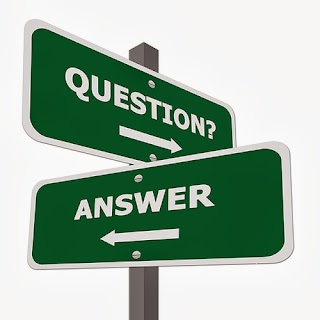By: Phillip Hall
The Right Way to Ask Questions in the Classroom.
The big question in this article asked the reader, "What does a teacher asking questions of a class expect the class to learn from the questioning process?" Teachers ask questions to check for understanding, which benefits the teacher just as much as the student. For example, after teaching a concept, the teacher may ask the class, "Does everyone understand?" As a child, I was always hesitant to raise my hand and ask the educator to explain if I couldn't grasp the concept. I felt as if I was the only one who didn't understand, so I wouldn't ask sometimes to save myself from the embarrassment. Asking questions such as the one stated above, is really telling the class it's their last chance if they are having problems. To answer the question, what is the right way to ask questions in the classroom, I believe educators should make sure that our questions are relevant to the subject and every student is given the opportunity to relate and process the question before they answer. We need to be sure all our students are given various ways to show they understand: think-pair share, use of gestures (thumbs up, touching, nose, etc.),use of dry-erase boards, etc.
Asking Questions to Improve Learning
The six general strategies for asking questions are: First, you should avoid asking "leading questions". A leading question is phrased in such a way that it suggests its own answer and therefore discourages students from thinking on their own. Second, follow a yes or no question with an additional question. For example,follow up by asking students to explain why they answered the way they did; this helps to provide evidence or an example, or to respond to a yes-or-no answer given by another student. Third, aim for direct, clear, specific questions. These types of questions can be answered in an essay form or paper assignments. The fourth strategy is not to ask more than one question at once in class discussions. The fifth strategy is to include notes of when you will pause to ask and answer questions during each class session, making classes more interactive. The last strategy is simple, just ask a mix of different types of questions. Asking “closed” questions are designed to test the student's comprehension and retention. These questions have a limited number of correct answers. Asking "managerial" questions, are to ensure that your students understand an assignment or have access to necessary materials. The last type of question is “Open” questions. Open ended questions prompt multiple and sometimes conflicting answers which are the most effective in encouraging discussion and active learning in the classroom.
<Three Ways to Ask Better Questions in the Classroom
The three general ways of asking better questions in the classroom are: prepare questions, play with questions, and preserve good questions.
Prepare Questions. I've never thought of preparing a question until I read this article. However, preparing a question can make a confused question more clear to the students. When preparing a question you could ask yourself, 'is it a question that needs to be asked?' By asking yourself this question, the teacher can prepare better question and teach more meaningful lessons.
Play with Questions. When the question is answered, it loses most of its power to engage students. By playing with the question and leaving it unanswered until the time being, encourages the students to think about it.
Preserve Good Questions. Good questions can be kept and asked in another class. We need to ask good questions so that students see the importance of questions and how they make us think and help us learn. Doing so may encourage students to start asking better questions themselves.
Asking Better Questions in the Classroom: As college students, our professors expect more than a yes-or-no" answer. This video explains the difference between an open-ended question and a closed-ended question. Asking a more detailed question such as an "open ended" questions, gets the students minds engaged to come up with a detailed answer, rather than a yes or no answer. Open ended questions allows the responder to become more enthused about the answer than "closed ended" questions. Closed ended questions can be answered by a "yes or no" answer which gives the responder a 50% chance of guessing the correct answer. This video really intrigued me by asking the question in two different styles. The closed ended questions was, "If Rosa Parks had given up her seat to a white man on the bus in 1955, do you think the history of Civil Rights in this country would be different?" This closed ended question, can be answered by a simple yes or no. The open ended question asked in the video was, "What if Rosa Parks had given her seat to a white man on the bus in 1955, what do you believe the consequences of the implication would have been for our country and to the civil right movement?" This questions leaves the responder able to do more thinking and come up with a variety of responses. Asking open ended questions makes the responder put on their "thinking cap" and think outside the box rather than answering with a yes or no andswer.
Questioning Styles and Strategies
This video was pretty cool, if you've ever read the book or watched the movie Bridge to Terabithia, you would understand why. The teacher gets the student's mind engaged when he asks them for comprehensive questions. The first question he asks his class is in the mastery style of questioning. The teacher asks the class "What would be the first thing you noticed if you came across Terabithia in the woods?" This question was answered in many of the same ways. He then follows up asking a question in the understanding style of questioning, by asking the class "What affect did Terabithia have on their relationship?" This question made the students echo the question. The third question the teacher asks his students was in the self-expressive style of questioning. This question gave each student the opportunity to draw what they thought Terabithia looked like. The next style of question was interpersonal, he asks "What would YOU like about Terabithia?" This gave students an opportunity not to give a wrong answer. The different types of questioning really intrigued me, I never understood how differnet types of questioning could promote different types of answers! As an educator, I plan to incorporate all the types of questioning in my classroom.


Hi Phillip,
ReplyDeleteI liked reading your post on teachers asking better questions. I understand not wanting to raise your hand. I was a shy child growing up. In class, I did not like raising my hand. I liked that you included a video, that demonstrates better questions to ask students. You did a good job in discussing each topic.
Very good.
ReplyDeleteHowever, you need links.